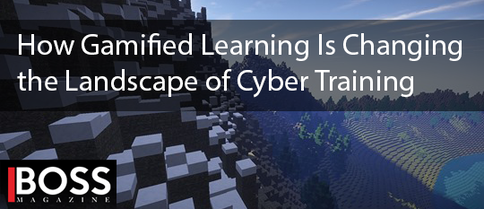|
|
Personal Projects
|
|
|
Hitman Go was released in 2014 and was applauded for it’s innovative visuals, simple mechanics, and engaging gameplay. Eidos was able to take a franchise involving stealth, action, and assassination and translate it into a digital board game. In a year Eidos continued this formula by releasing Lara Croft Go. By modifying the visuals and tweaking the mechanics, Eidos was able to take another brand with decidedly different goals and create a uniquely different “digital board game” using the same structure. Just this past year Eidos released it’s third “Go” game using the franchise Deus Ex as the foundation. With the “Go” games now a trilogy, I thought it would be interesting to compare and discuss the differences between the Go games. How modifying mechanics and visuals can create a decidedly different atmosphere even within the same structure. Today I’ll be discussing Hitman Go, Lara Croft Go, and Deus Ex Go. This will be mainly about visuals and mechanics, yet if you’re concerned about seeing potentially spoiling visuals for these games… turn back now! The BrandsTo start with I thought it would be best to briefly discuss these three franchises, their goals, and how are they different. Hitman is traditionally a stealth game, that has players exploring flexible levels that allow players to accomplish missions their own way. The games feel organized, strategic, and almost “James Bond-esque.” Lara Croft has players exploring ancient ruins and tombs, solving puzzles, and encountering hostile creatures along the way. Typically these games are filled with a sense of discovery, ancient environments, and a very “Indiana Jones” feel. Finally there’s Deus Ex, an action role-playing game that places the player in a dystopian, cyberpunk future. In this future the world has developed “human augmentations,” technology that can increase human attributes… run faster, jump higher, etc. These games typically center around conflicts between factions who do and do not believe in human augmentation. Deus Ex typically feels gritty, futuristic, and an almost “Film Noire” feel to it. The VisualsVisually these games change as drastically as they are different from each other. Hitman Go features an extremely elegant maquette styled environment. The environments feel small and look assembled, and the characters feel like board game pieces. Each level feels like a unique set piece, and the players are even able to rotate the level around to look at all of it’s details. A combination of expertly rendered ambient lighting, shading, and easily recognized materials (plastic feels like plastic, etc) helps create this effect. It’s also worth noting that while the set designs have extensive detail, the player set pieces are actually pretty simplistic. When you move your “hitman” over an enemy, there’s no combat animation… The piece just knocks over the other piece. It’s simple, elegant, and plays with our own innate understanding of board games. Lara Croft Go has a shockingly different artistic direction. Whereas most of the Lara Croft franchise goes for a realistic visual style, Lara Croft Go goes for a geometric, highly saturated, almost cel shaded feel. In many ways the environments feel illustrative, almost like modern graphic design. This style feels like the polar opposite from the recent AAA Lara Croft games, yet works surprisingly well. Lara Croft Go sacrifices the rotation feature that Hitman Go had, and utilizes full character animations. In this way, while the mechanics still feel similar to a board game, the visual style pulls further away. Deus Ex Go continues a step further by creating a visual style that’s simplistic, modern, and “low poly.” The franchise also makes heavy use of tessellated triangular patterns, stark black and white environments, and uses colors to pop important information. Using low poly geometry lends itself towards feeling “high tech” or futuristic. Deus Ex Go continues the same trend as Lara Croft Go and features full character animations. To top off the detective/Film Noir feel, Deus Ex Go has an extra layer of story added through character dialogue. While in a level, characters from the series will communicate with the protagonist. The style of writing and character dialogue, completes the Deus Ex feel. The MechanicsPotentially the most interesting difference between these games are how the mechanics change between them. As you might have imagined, Hitman Go focuses on human type enemies for the player to overcome. Each enemy has it’s own unique behavior, that coupled with the level design, creates puzzles for the player to overcome. I noted that Hitman Go has eight different types of enemies…
While there are some bonus objectives, Hitman Go relies on the player to safely navigate their environment and eliminate their target. Lara Croft Go modifies this formula slightly, to create a different game feeling for the player. Within Lara Croft go, I noticed fewer enemies but also the addition of other obstacles or traps. Lara Croft Go has 4 different types of enemy:
While mechanically every “Go” level is a puzzle, the traps introduced in Lara Croft Go really adds to the feeling that you’re exploring and solving ancient ruins. In many ways Deus Ex Go follows a similar formula to Lara Croft Go having fewer enemy types, but instead of having “Traps” Deus Ex Go introduces “abilities. Deus Ex Go has 4 different types of enemies:
Deus Ex Go has two different types of ability tiles, each with two varying functions:
The Rule of EightWhile it may be a bit of a stretch in regards to Deus Ex Go, I think it’s interesting that relatively speaking there’s a rule of 8 for the “Go” games. There are 8 enemy types in Hitman Go, there are 4 types of enemies and 4 types of traps in Lara Croft Go, and there are 4 types of enemies and 2 abilities with 2 functions in Deus Ex Go. I wonder if there’s a correlation for how we as players understand levels. If for this type of game, having 8 elements to learn and navigate is optimal? I wonder if other board games or puzzle games like this have similar rule sets. It must certainly be optimal from a production standpoint to manage only 8 different kinds of obstacles, and allow design flexibility to create levels of varying complexity. Final ThoughtsWhile creating massively different artistic directions is important for emphasizing each brand respectively, modifying the equation of obstacles is paramount to creating a gameplay feel that respects the brand. Hitman is about taking out your target and navigating your enemies, so it makes sense that it emphasizes on human type obstacles. Lara Croft is about exploring dangerous ruins and solving ancient puzzles… having a balance between enemies and ancient traps aids to this feel. At the end of the day Deus Ex is about using abilities to overcome your enemies, whether they be human or technological. For this having the appropriate balance between enemies and using your character’s abilities, makes the player feel like a powerfully augmented agent… instead of an assassin or tomb raider.
I’ll be curious to see if Eidos continues this trend with a fourth “Go” game? Thief maybe? We’ll have to wait and see what direction they take. In any case I hope this was interesting! I strongly believe that simple and easy to understand mechanics, in a structure that’s very familiar to most players… is a really effective formula. Often games tend to rely on complexity and at times can under deliver on the experience.
1 Comment
|
AuthorI make games, I play games... and sometimes I have some thoughts about that. Archives
March 2024
|
Proudly powered by Weebly














 RSS Feed
RSS Feed